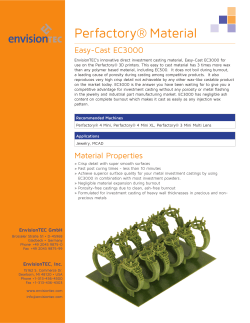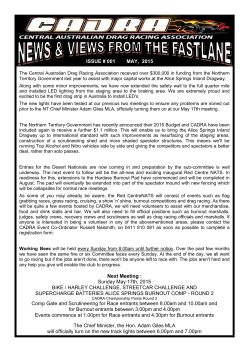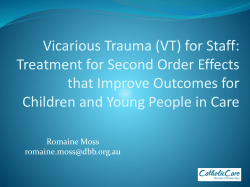
Teacher Burnout and Critical Thinking among EFL Teachers. J
© 2015, ISSN: 2322-4770 Science-Line Publication Journal of Educational and Management Studies www.science-line.com J. Educ. Manage. Stud., 5(1): 85-91, March 25, 2015 JEMS Teacher Burnout and Critical Thinking among EFL Teachers 1 2 Ahmad Yaghoubi *, Parnian Habibinejad 1 PhD, Assistant Professor, Department of English LanguageTeaching, Faculty of Persian Literature and Foreign Languages, Roudehen Islamic Azad University, Roudehen, Iran 2 MA Graduate in Teaching English as a Foreign Language, Roudehen Islamic Azad University, Roudehen, Iran *Corresponding author's Email: ayaghoobi@riau.ac.ir ORIGINAL ARTICLE INTRODUCTION PII: S232247701500013-5 Received 13 Jan. 2015 Accepted 08 Mar. 2015 ABSTRACT: The purpose of the present study is to examine whether critical thinking has any significant relationship with teacher burnout and whether this relationship is the same between male and female, and also novice and experienced teachers. To achieve this goal, one hundred twenty Iranian EFL teachers aged 23 to 57 were randomly selected based on random sampling design from four institutes located in the city of Tehran. The Cornell Critical Thinking Test level X was chosen to measure the level of quality thinking of the participants. And they were asked to fill out the Maslach Burnout Inventory which was adapted for teachers. A quantitative, correlational design was adopted and the data were analyzed through the Pearson correlation. The results indicated the existence of a statistically significant negative relationship between critical thinking and teacher burnout. And it was found that there was no significant difference between male and female, and between novice and experienced teachers. On the whole, the findings of the study simply highlight the importance of critical thinking and its relationship with burnout in the teaching profession. This study paves the way for further research on the possible significant impact of critical thinking on teacher burnout which can be led to the thought that the more EFL teachers possess critical thinking skills, the less likely they experience burnout. The results also suggest that gender and experience is not an issue when it comes to burnout, and all ELT teachers may be at risk unless they possess qualities such as the ability to think critically. Keywords: Teacher Burnout; Critical Thinking; Novice Teachers; Experienced Teachers. should be supported from other teachers, parents and organization administrators. DiPaola and Hoy (2008) emphasized the importance of supporting teachers in their professional and personal improvement by administration. As the second variable of the study, critical thinking is one of the most modern issues in educational studies which is practiced in classrooms as a way to train decisive and open-minded people with fair judgmental qualities (Paul & Elder, 2008). They continued that in order to achieve excellence in thought one must be cultivated, and needs to be trained to learn the critical thinking skills. According to Paul and Elder (2008), those who think critically typically engage monitoring, reviewing and assessing goals and purposes. In monitoring, reviewing and assessing these intellectual constructs, those who think critically strive for such intellectual ends as clarity, precision, accuracy, relevance, depth, breadth, and logicalness. Paul and Elder (2008) continues that these modes of thinking assist us to accomplish what we are doing and hence to solve the issues innate in pursuing those tasks. A number of studies have been conducted on burnout, as well as on critical thinking among teachers. In a study of 64 universities in the United States by Paul and Elder (2008), it was reported that the overwhelming majority of lecturers (89%) claimed critical thinking to be a primary objective of their instruction. However, only a small minority (19%) could give a clear explanation of what critical thinking is. Furthermore, according to their answers, only 9% of the respondents were clearly teaching for critical thinking on a typical day in class. It was concluded that In the Iranian context, teachers consider teaching a highly stressful profession which causes exhaustion. Iranian English teachers teach long hours. Most of them start teaching from morning until late in the evening. And given the low paid salaries, they have to work hard to make both ends meet. There is no need to say that they have to teach in the best possible way. Therefore, they have to tolerate a lot of stress from supervisors and authorities in the institutions. And these might raise burnout among Iranian English teachers. It is argued that the condition in which teachers feel mentally, physically, and emotionally exhausted is the result of a variable known as teacher burnout (Burke et al., 1996). Van Horn et al., (1999) describe burn out as a syndrome which is related to an emotional strain caused by working too much and too often. They also believe that professions which are in close contact with people such as teachers are more vulnerable to burnout. The term teacher burnout has gained specific interest and recognition recently as a global problem and has been used in conjunction with the teaching profession more than any other career. Farber (2010) estimated that 30 to 35% of American teachers are dissatisfied strongly with their profession and 5 to 20% truly are burned out. Burnout can begin in any phase of a teaching career, but is most often seen within three to five years after initial teacher induction (Fives et al., 2007). The important point for the starting teachers is that they should have realistic expectations. And they To cite this paper: Yaghoubi A and Habibinejad P. 2015. Teacher Burnout and Critical Thinking among EFL Teachers. J. Educ. Manage. Stud., 5 (1): 85-91. 85 Yaghoubi and Habibinejad, 2015 only a minority of teachers have a clear view of what critical thinking actually is. In a study conducted by Van Horn et al., (1999) on teacher burnout and lack of reciprocity, it was revealed that when teachers invest more than they get back from their school, they report higher levels of emotional exhaustion. Burisch (2002) carried out a three-year longitudinal study on the predictive importance of numerous contextual and disposition variables in burnout. He found that neuroticism became relevant in emotional exhaustion; whereas extraversion in personal accomplishment and openness and neuroticism in depersonalization didn’t. Among contextual variables, being overburdened and supervised became the most outstanding variables. Personal accomplishment and depersonalization were better predicted by disposition variables whereas contextual variables better predicted emotional exhaustion. Ghanizadeh and Ghoghnoosi (2014) investigated the role of teacher attributions in teacher burnout and teacher self-regulation and reported that internal and controllable attributions positively predict teachers’ self-regulatory skills, whereas teacher burnout is associated with external and uncontrollable attributions. Moreover, Ketabi et al ., (2012) studied the attitudes of 106 Iranian L2 teachers and revealed that while most of the participants had clear conceptions of what critical thinking consists of, their views seemed to be rudimentary and in many cases incomplete and shallow. Furthermore, Jamshidirad et al., (2012) investigated the relationship between burnout and gender among English language teachers and reported that gender has no effect on burnout and that male and female teachers had no significant difference in their level of burnout. Regarding this importance, critical thinking might be seen as an effecting variable which might reduce burnout among EFL teachers. And the absence of the relevant studies in the Iranian context made the researcher to focus on the possible significant relationship between critical thinking and teacher burnout. Certainly, this study can pave the way for more experimental research to ensure the findings of the present study. employed and active as classroom teachers when chosen to participate in the study. The Cornell Critical Thinking Test level X was chosen to measure the level of quality thinking of the participants. The CCTT is a standardized test developed by Ennis et al., (1985). It is based on the developers’ conceptual definition of critical thinking as the process of reasonably deciding what to believe and do. It consists of 78 items. And each correct answer provides one positive point for the test-taker. Higher scores indicate a higher level of critical thinking. Moreover, the test has been widely used throughout the world for more than twenty years for determining critical thinking ability of a group or individuals for the purposes of admission to academic programs or as a criterion for employment. The reliability coefficient of the CCTT Level X ranges from .67 to .90 (Ennis et al, 1985). Several measures have been designed to measure the construct of burnout, although the Maslach Burnout Inventory (Maslach, 1982) has been the most extensively used instrument (Leung & Lee, 2005). The MBI was initially addressed to health-care professionals, although there have been several adaptations to different occupations such as social workers, police officers, lawyers, engineers, physicians, customer service representatives, and teachers. It is composed of 12 items. There is a similar three-factor structure across different occupational groups. Three items are for emotional exhaustion. High scores indicate greater emotional exhaustion (and hence more burnout). Three items are for depersonalization. High scores indicate greater depersonalization (and hence more burnout). Three items are for personal accomplishment. High scores indicate greater personal accomplishment (and hence less burnout). The final three items are a new scale of satisfaction with teaching EFL which has been developed by the researcher. High scores indicate more satisfaction with being an EFL teacher. First of all, the reliability index was calculated, and KR-21 reliability indices for the CT and burnout were amounted to .89 and .88. After that, teachers working at four EFL institutes were randomly selected and the necessary arrangements were made with the heads of the institutes. The researcher briefed them on the purpose of the study. Sixty male EFL teachers and sixty female EFL teachers were then selected through the random sampling. Consequently, in a meeting with teachers, they were briefed on the purpose of the study and how the questionnaires should be responded and then questionnaires were administered based on the schedules of the teachers. The researcher met them MATERIALS AND METHODS In the present descriptive correlational study one hundred twenty Iranian EFL teachers, aged 23 to 57 were randomly selected from four institutes located in the city of Tehran based on random sampling design. The participants had between six months to 13 years of teaching experience. They were 86 J. Educ. Manage. Stud., 5(1): 85-91, 2015 and asked them to respond to the questionnaires. The researcher was present to eliminate any possible misunderstanding. Eventually, data were collected and rated by the researcher using the instructions given by the test/questionnaire providers. The data collected via the MBI questionnaire and the Cornell Critical Thinking Test were rated. The teachers participating in this research had two scores each. Each participant’s teaching experience and gender were also recorded. And the researcher used the Pearson Product Moment Correlation (PPMC) to calculate the degree of correlation between critical thinking and teacher burnout. between Iranian EFL teachers' burnout and critical thinking among female teachers (r (58) = -.91, P < .05, representing a large effect size). But to answer the research question, the results of the Z-transformation formula (Z = .07, P = .47 > .05) indicated that there was not any significant difference between male and female teachers with regard to the relationship between their burnout and critical thinking. Table 5 and Table 6 show the ztransformation formula among male and female participants. Thus the second null-hypothesis was not rejected. Scatter Plot 1 proves that there was a linear relationship between burnout and CT among male and female teachers. The spread of dots has fallen on the diagonal. The assumption of homoscedasticity was also met. The spread of dots did not form a funnel shape, i.e. narrow at one end and wide at the other end. RESULTS This study aimed at investigating the relationships between critical thinking and burn out among novice and experienced, and male and female teachers. A total of 120 teachers were studied, 60 male and 60 female teachers were chosen. Their experience in teaching varied from 6 months to 13 years. The mean, standard deviation and variance of their performances on the critical thinking test and burnout questionnaire have been displayed in Table 1. Research Question 3 Is there a statistically significant difference between novice and experienced EFL teachers with regard to the relationship between their burnout and critical thinking? In order to answer the third research question, Pearson correlation was used. There was a significant and negative relationship between Iranian EFL teachers' burnout and critical thinking among novice (r (63) = -.90, P < .05, representing a large effect size) (Table 7), and there was also significant and negative relationship between Iranian EFL teachers' burnout and critical thinking among experienced teachers (r (53) = -.88, P < .05, representing a large effect size). But to answer the research question, the results of the Z-transformation formula (Z = .14, P = .44 > .05) indicated that there was not any significant difference between novice and experienced teachers with regard to the relationship between their burnout and critical thinking. Thus the third null-hypothesis was not rejected. Figure 2 proves that there was a linear relationship between burnout and CT among male and female teachers. The spread of dots has fallen on the diagonal. The assumption of homoscedasticity was also met. The spread of dots did not form a funnel shape, i.e. narrow at one end and wide at the other end. Research Question 1 The data were analyzed through the Pearson correlation. For this purpose, the assumption of normality was checked. As displayed in Table 42, the ratios of skewness and kurtosis over their respective standard errors were within the ranges of +/- 1.96. Thus the normality assumption was met. In order to verify the first research hypothesis that reiterates there is no statistically significant relationship between critical thinking and teacher burnout among EFL teachers, Pearson correlation was implemented. And the findings showed that there was a significant and negative relationship between Iranian EFL teachers' burnout and critical thinking (r (118) = .90, P < .05, representing a large effect size) (Table 3). Thus the first null-hypothesis was rejected. Research Question 2 Is there a statistically significant difference between male and female EFL teachers with regard to the relationship between their burnout and critical thinking? In order to answer the second research question, Pearson correlation was used. In each of the female and male groups, the findings showed that there was a significant and negative relationship between Iranian EFL teachers' burnout and critical thinking among male (r (58) = -.89, P < .05, representing a large effect size) (Table 4), and there was also significant and negative relationship Table 1. KR-21 Reliability Indices 87 N Mean Variance R CT Burnout 120 52.70 202.918 .89 120 54.05 186.048 .88 Valid N (list wise) 120 Yaghoubi and Habibinejad, 2015 Table 2. Descriptive Statistics Gender Exp. CT Burnout N CT Burnout N CT Burnout N CT Burnout N Novice Male Experienced Novice Female Experienced N Minimum Maximum Mean 34 34 34 26 26 26 31 31 31 29 29 29 26 34 72 79 54.12 51.38 Std. Deviation 11.964 12.341 31 34 65 78 44.19 61.65 9.940 12.149 98.802 147.595 34 30 82 78 56.06 51.87 15.277 14.726 233.396 216.849 79 55.07 52.69 16.353 13.326 267.424 177.579 29 35 75 Variance 143.137 152.304 Table 3. Testing Normality Assumption Gender Exp N Skewedness Statistic Male Novice Experienc ed Female Novice Experienc ed Statistic Kurtosis CT 34 -.678 Std. Error .403 Ratio Statistic -.083 Std. Error .788 -1.68 -0.11 Burnout CT Burnout CT 34 26 26 31 .765 .622 -.810 .103 .403 .456 .456 .421 1.90 1.36 -1.78 0.24 -.278 -.698 -.473 -1.499 .788 .887 .887 .821 -0.35 -0.79 -0.53 -1.83 Burnout CT Burnout 31 29 29 .304 .028 .213 .421 .434 .434 0.72 0.06 0.49 -1.435 -1.556 -1.504 .821 .845 .845 -1.75 -1.84 -1.78 Table 4. Pearson Correlation, CT with Burnout Burnout CT Pearson Correlation -.900** Sig. (2-tailed) N .000 120 **. Correlation is significant at the 0.01 level (2-tailed). Table 5. Pearson Correlation, CT with Burnout by Gender Gender Male Burnout CT CT Female Pearson Correlation Sig. (2-tailed) N Pearson Correlation -.897** .000 60 -.910** Sig. (2-tailed) N .000 60 **. Correlation is significant at the 0.01 level (2-tailed). Table 6. Z-Transformation, Gender Z-Value Sig. .07 .47 Table 7. Z-Transformation, Experience. Z-Value Sig. .14 .44 88 Ratio J. Educ. Manage. Stud., 5(1): 85-91, 2015 Table 8. Pearson Correlation, CT with Burnout by Experience Gender Novice Burnout CT Pearson Correlation -.909** CT Sig. (2-tailed) N Pearson Correlation .000 65 -.884** Experienced Sig. (2-tailed) N .000 55 **. Correlation is significant at the 0.01 level (2-tailed). Figure 1. Scatter Plot of CT with Burnout by Gender Figure 2. Scatter Plot of CT with Burnout by Experience DISCUSSION teachers who have higher critical thinking skill are less likely to suffer from burnout. The second research question was answered with a null hypothesis; therefore, it stated that there is no significant difference between male and female teachers with regard to the relationship between their burnout and critical thinking. The findings equally clarify the importance of critical thinking in both male The Pearson correlation was run to analyze the data collected in the present study. The results indicated a positive answer to the first research question, i.e. there was a significant and negative relationship between Iranian EFL teachers' burnout and critical thinking. This can statistically prove that 89 Yaghoubi and Habibinejad, 2015 and female EFL teachers and prove no difference between the two genders in this aspect. Further analysis also supports the third null hypothesis. Therefore, there is no significant difference between novice and experienced teachers with regard to the relationship between their burnout and critical thinking. Contrary to expectation, it is not being novice or experience in the field of EFL which increases burnout among teachers. In fact, the years one has spent in the field does not mean they suffer more from burnout, and other influential factors should be taken into account. This study revealed that there is a statistically significant negative relationship between burnout and critical thinking among EFL teachers. Therefore, this correlational study paves the way for more applied studies to investigate the cause and effect relationship between critical thinking and teacher burnout. Then it can be concluded that the more an EFL teacher possesses critical thinking skills, the less likely she or he is to experience burnout. The results also indicate that gender and experience is not an issue when it comes to burnout and all ELT teachers may be at risk unless they possess qualities such as the ability to think critically. These findings are in line with the findings of the study carried out by Jamshidirad et al., (2012), who reported that gender does not affect burnout. They too measured the level of teacher burnout among male and female English Language teachers and stated that teachers of the two genders did not show significantly different levels of burnout. Bachelor and Gold (1988), Farber (1984) and Holloman (1999) also reported no significant difference between males' and females' burnout levels. The findings are, however, not consistent with those of Bauer et al., (2007), Farber (1998), Haberman (2004), Labone (2002), Leithwood et al., (2001), and Maslach et al., (2001) who found male teachers more subject to burnout than female teachers. Moreover, the results turned out to be different from those of Lau et al., (2005) as well as Timms et al., (2006), who reported that female teachers experienced higher levels of burnout than male teachers. On the whole, the findings of the study simply highlight the importance of critical thinking and its relationship with burnout in the teaching profession. In order to complement the findings of the present study, some further research can be suggested: 1- The same kind of research could be done on a larger scale to expand the generalizations of the study. 2- Similar studies can be carried out to study the relationship between burnout and critical thinking in other professions. 3- Qualitative research can be done to investigate how critical thinking influences burnout among teachers. 4- Qualitative research can be done to study why burnout is not related to teaching experience. 5- Further research needs to be done to study the factors that actually influence teacher burnout. REFERENCES Bachelor, P., & Gold, Y. (1988). Signs of burnout are evidence for practice teachers during the training period. Education, 108(4), 546-555. Bauer, J. (2007). burnout and effort-reward-imbalance in a sample of 949 German teachers. International Archives of Occupational and Environmental Health, 80(5), 433-441. Burisch, M. (2002). A longitudinal study of burnout: The relative importance of dispositions and experiences. Work and Stress, 16, 1-17. Burke, R. J. (1996). Predicting teacher burnout over time: Effects of work stress, social support, and self-doubts on burnout and its consequences. Anxiety, Stress & Coping: An International Journal, 9(3), 261-275. DiPaola, M. F., & Hoy, W. K. (2008). Principals improving instruction: Supervision, evaluation, and professional development. Boston, MA: Pearson/Allyn and Bacon. Ennis, R.H. (1985). Cornell Critical Thinking Test Level X and Z Manual. Pacific Grove: Midwest Publications. Farber, B. A. (1998). Tailoring treatment strategies for different types of burnout. Annual Convention of the American Psychological Association (pp. 1-22). San Francisco, CA: ERIC. Farber, K. (2010). Why Great Teachers Quit: And How We Might Stop the Exodus. Thousand Oaks, CA: Corwin Press. Fives, H. (2007). Does burnout begin with studentteaching? Analyzing efficacy, burnout, and support during the student-teaching semester. Teaching and Teacher Education, 916–934. Ghanizadeh, A., & Ghonsooly, B. (2014). A tripartite model of EFL teacher attributions, burnout and self-regulation: Toward the prospects of effective teaching. Educational Research for Policy and Practice, 13(2), 145-166. Haberman, M. (2004). Teacher burnout in black and white. Milwaukee, WI: The Haberman Educational Foundation. Holloman, H. l. (1999). Factors related to burnout in firstyear teachers in South Carolina. Dissertation: University of South Carolina. 90 J. Educ. Manage. Stud., 5(1): 85-91, 2015 Jamshidirad, M. (2012). Language teachers' Burnout and Gender. International Journal of Applied Linguistics and English Literature, 1(4), 46-52. Ketabi, S. (2012). Critical thinking across the ELT curriculum: A mixed methods approach to analyzing L2 teachers' attitudes towards critical thinking instruction. International Journal of Research Studies in Education, 2(3), 1-10. Labone, E. (2002). The Role of Teacher Efficacy in the Development and Prevention of Teacher Burnout. Paper presented at the annual meeting of the Australian Association for Research in Education, Brisbane, Australia, December 2002. Retrieved from http://www.aare.edu.au/02pap/lab02593.htm. Lau, P. S. (2005). Do demographic characteristics make a difference among Hong Kong secondary school teachers? Social Indicators Research, 71, 491-516. Leithwood, K. (2001). Maintaining emotional balance. Educational Horizons, 79(2), 73-82. Leung, Y. P., & Lee, W. (2005). Dimensionality of the Maslach Burnout Inventory (MBI-ES) in school teachers: A study of several proposals. European Journal of Psychological Assessment, 21(1), 67-76. Maslach, C. (1982). Burnout: The Cost of Caring. New York: Prentice-Hall. Maslach, C., Schaufeli, W. B., & Leiter, M. P. (2001). Job Burnout. Annual Review of Psychology, 52(1), 397422. Paul, R., & Elder, L. (2008). The Miniature Guide to Critical Thinking Concepts and Tools. Dillon Beach, CA: Foundation for Critical Thinking Press. Timms, C. (2006). Workplace dynamics and teachers: Gender implications. Australian Journal of Social Issues. 41 (3), 343-358. Van Horn, J. E. (1999). Teacher burnout and lack of reciprocity. Journal of Applied Social Psychology, 29(1), 91-108. 91
© Copyright 2024









